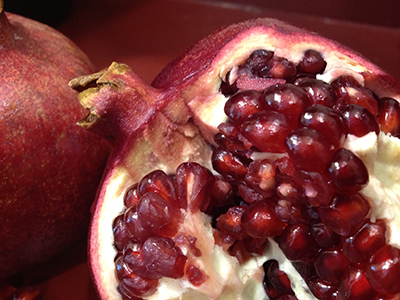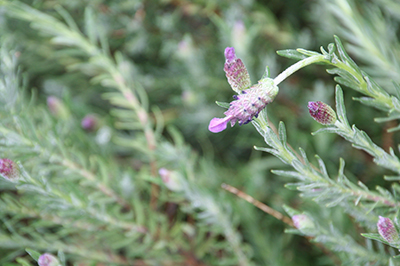 Are some plants aphrodisiacs, or is that just a myth? Garden expert and plant detective Helen Yoest takes readers on a romp through history, lore and ethnobotany to find out how 45 of these plants got their ‘’hot” reputation – and what modern science has to say about it.
Are some plants aphrodisiacs, or is that just a myth? Garden expert and plant detective Helen Yoest takes readers on a romp through history, lore and ethnobotany to find out how 45 of these plants got their ‘’hot” reputation – and what modern science has to say about it.
Plants With Benefits: An Uninhibited Guide to the Aphrodisiac Herbs, Fruits, Flowers and Veggies in Your Garden (St. Lynn’s Press, February 1, 2014) is filled with lush photography, growing tips, and recipes for preparing teas, potions, and tasty treats for the reader’s pleasurable use. Yoest helps the reader discover which common garden plants and favorite edibles have that “something extra,” and why.
This is the first book about selecting garden plants for their sex appeal. Plants were selected for a number of reasons, but primarily because they affect brain chemistry by directly increasing blood flow to sex organs , or are psychologically suggestive because of aroma (lavender, cardamom, almonds) or shape (banana, fig, avocado). Readers will learn what all the female arousal talk is all about, what was bad news for Aztec virgins and what was Casanova’s secret weapon.
Nancy Heckler, the General Manager of Heronswood Gardens writes, “ Leave it to Helen Yoest to come up with an intoxicating way to introduce us to a bit of historical (and hysterical) plant folklore. Her uniquely euphoric approach will make your day.”
The last two things a woman puts on before meeting her date for dinner is a touch of perfume and a smile. We want to be attractive to our evening companion. Even Cleopatra, the last Pharaoh of Egypt, more than 2000 years ago, felt the same when she got ready to meet her man. To ready herself, she used plants with benefits.
I didn’t set out to write a botanical Kama Sutra. I am a gardener. I write about designing gardens that are in harmony with nature. Then I got intrigued when I learned of the lengths Cleopatra and others throughout history went through to ready themselves for an evening out. Turns out our forefathers and mothers knew the value of aphrodisiac plants.

In the beginning
Since the deep past of history, aphrodisiac plants have been identified and sought out as a remedy for various sexual anxieties and to increase fertility. Procreation being rather important to the continuation of the race, fertility has long been an important moral, religious, and societal issue. Enter the aphrodisiac plants – nature’s little helpers. The aphrodisiacs featured in Plants with Benefits have been known to act as catalysts for fertility and, yes, sexual performance due to their physiological and psychological effects. Aphrodisiacs are based on the principle that what a person eats, drinks, rubs on the skin, inhales – or simply views – can have an impact on his or her sex life, whether direct or indirect.
How a plant made the list
As I got seriously into my research, looking for possible explanations for various plants’ aphrodisiacal reputations, a pattern presented itself. To make my list, the “O” list, a plant had to have one or more of three qualities that could affect our pleasure centers. But I also couldn’t ignore the importance of a fourth.
Quality #1: A plant is psychologically suggestive because of aroma or shape. Sometimes, just thinking that something is an aphrodisiac is enough to make it work as one. If it looks like a duck and walks like a duck… The classic example is the banana. Good for you, and also good for a bit of sophomoric humor. The banana looks the part, so your mind can’t help but go there.
Quality #2: A plant affects brain chemistry by directly increasing blood flow to sex organs or contributing to other pleasurable sensations. I think of these are heat generators or warming agents. Celery, that otherwise benign plant has benefits as a warming agent. It was so believed that celery was an aphrodisiac, that Casanova regularly ate this plant before hooking up with his mistress. He believed.
 Quality #3: A plant’s hormones mimic human hormones – like a tonic to ignite your own hormones. Researchers are finding that some foods do stimulate the production of hormones that affect our libidos. As an example, the Kama Sutra of ancient India speaks of fennel as a sexual stimulate. The Egyptians also regarded fennel as an effective libido booster, as did the Chinese. Even today, fennel soup is served in modern Mediterranean culture to strengthen sexual desire.
Quality #3: A plant’s hormones mimic human hormones – like a tonic to ignite your own hormones. Researchers are finding that some foods do stimulate the production of hormones that affect our libidos. As an example, the Kama Sutra of ancient India speaks of fennel as a sexual stimulate. The Egyptians also regarded fennel as an effective libido booster, as did the Chinese. Even today, fennel soup is served in modern Mediterranean culture to strengthen sexual desire.
Quality #4: A plant promotes health and vigor. We know that good nutrition is linked to good health and high energy levels – which admittedly can help set the stage for an active sex life. On that basis alone, hundreds of healthy foods would have made the list for this book; however, I limited my plant list to ones that had an aphrodisiac history–arugula comes to mind. Its nickname is The Rocket and for good reason. 1st century A.D, Pliny the Elder cited that arugula increased libido, along with other health benefits. Arugula was thought to clear the mind while increasing power and energy. Virgil wrote, “The rocket excites the sexual desire of drowsy people.”
So what did Cleopatra use to get ready for an evening out? First she bathed in water steeped with saffron, then doused herself with lavender.
Plants with Benefits explores these wonders in nature, plants that can set a romantic stage, be it lore or illusion, fact or fiction. Come discover what others have known for centuries.
Almond flavor has long been one of my favorite scents…geesh, and now I know why. When researching Plants with Benefits, I learned almonds were an aphrodisiac. Here’s an excerpt from my book:
Almonds were domesticated by at least 3,000 B.C., and perhaps earlier. Wild almonds have been found in Greek archeological sites dating back to 8,000 B.C. One of the oldest known aphrodisiacs, almonds symbolize fertility. In the Bible, we read of Sampson wooing Delilah with almond branches, poor fellow. And later, we find the Romans showering newlyweds with almonds, hoping to get the young couple off to a good start.
Did you know Alexandre Dumas, author of The Count of Monte Cristo, dined on almond soup each night before meeting his mistress?
ALMOND SOUP
Source
Serves 4
INGREDIENTS
- 1 tablespoon butter
- 2 tablespoons almond butter (like peanut butter but made with almonds)
- 1 clove garlic, peeled and crushed
- 1 large stalk celery, sliced thin
- 1 cups chicken or vegetable broth
- 2/3 cup ground almonds
- 1/8 teaspoon ground mace or 1/2 teaspoon nutmeg
- 1 cup heavy cream salt to taste
- 2 tablespoons toasted slivered almonds to top dress
METHOD
- Melt butter in a heavy saucepan over medium heat.
- Add garlic and celery.
- Cook and stir until softened, about 4 to 5 minutes.
- Add chicken or vegetable broth and increase heat to medium-high.
- Bring to a simmer.
- Stir in almond butter until dissolved and season with mace (or nutmeg).
- Reduce heat to medium-low, cover, and simmer until the celery is tender, 30 to 40 minutes.
- Turn off heat and allow the almond soup to stand covered for 1 hour.
- Puree the warm soup in a blender or immersion blender until smooth.
- Pour through a sieve into a clean saucepan.
- Stir in cream and place over medium-low heat.
- Heat until hot, being careful not to bring to a boil or else the cream will curdle.
- Season with salt to taste
- Serve garnished with toasted slivered almonds
About the Author:
Helen Yoest is an award winning freelance writer and garden stylist. She serves on the board of the JC Ralston Arboretum, is past Regional Representative of the Garden Conservatory Open Days tour, and is an honorary member of the Pi Alpha Xi honor society for floriculture, landscape horticulture and ornamental horticulture. She opens her garden annually in Raleigh, NC where she lives with her husband and three children.







